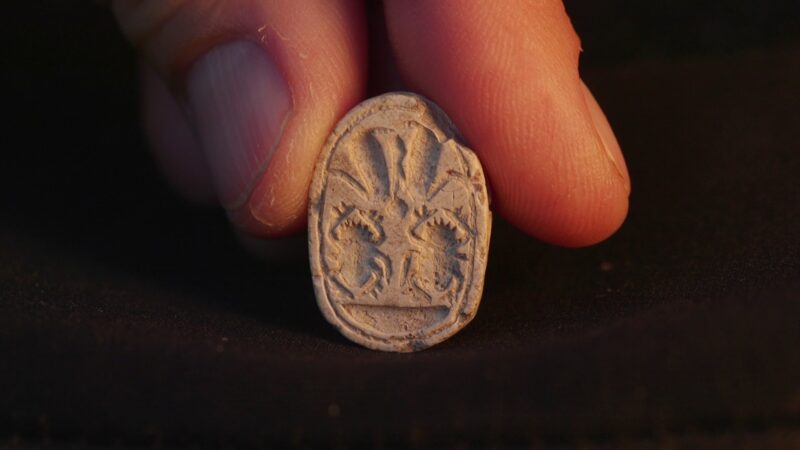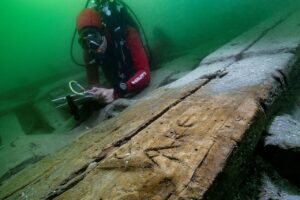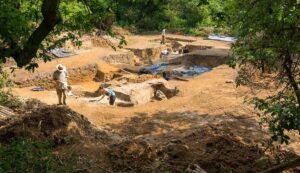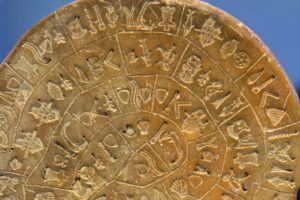When kids are outside they pick up anything that catches their eye — an oddly shaped rock, leaves, sticks, bugs. There are endless possibilities. But when three-year-old Ziv Nitzan was out walking with her family near Tel Azekah in central Israel, she picked up something far more unusual: a 3,800-year-old Egyptian artifact.
The small object she found is an ancient scarab amulet dating back to the Middle Bronze Age.
“Out of the 7,000 stones around her, she picked up one stone,” Omer Nitzan, Ziv’s older sister, said in a statement. “Then she brushed off the sand and saw that something was different about it. I called my parents to come see the beautiful stone and we realized we’d discovered an archaeological find!”
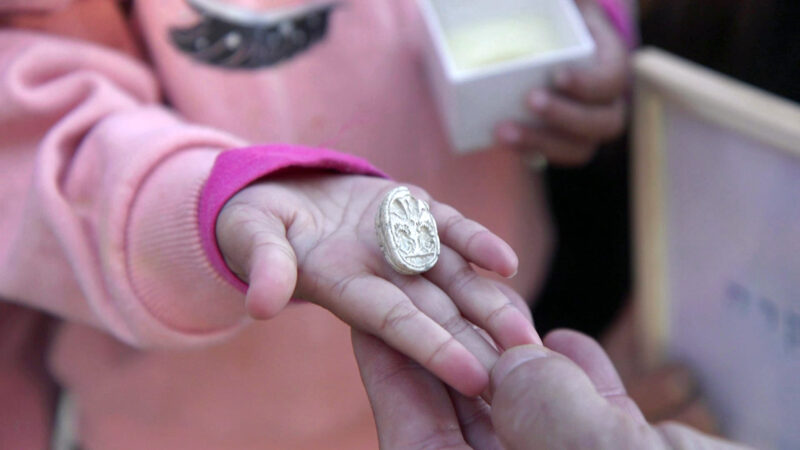
Photo: Israel Antiquities Authority
Ancient scarab
Tel Azekah is a known archaeological site, and excavations have taken place there for around 15 years. Shaped like a beetle on one side and with engravings on the other, Nitzans’ parents knew they might be looking at something old and valuable. They contacted the Israel Antiquities Authority (IAA).
The IAA confirmed the authenticity and significance of the Canaanite scarab. The Canaanites were an ancient Semitic people who lived across parts of modern-day Israel, Palestine, Lebanon, Syria, and Jordan.
“Scarabs were used in this period as seals and as amulets,” explained Daphna Ben-Tor from the IAA. “They were found in graves, in public buildings, and in private homes. Sometimes they bear symbols and messages that reflect religious beliefs or status.”
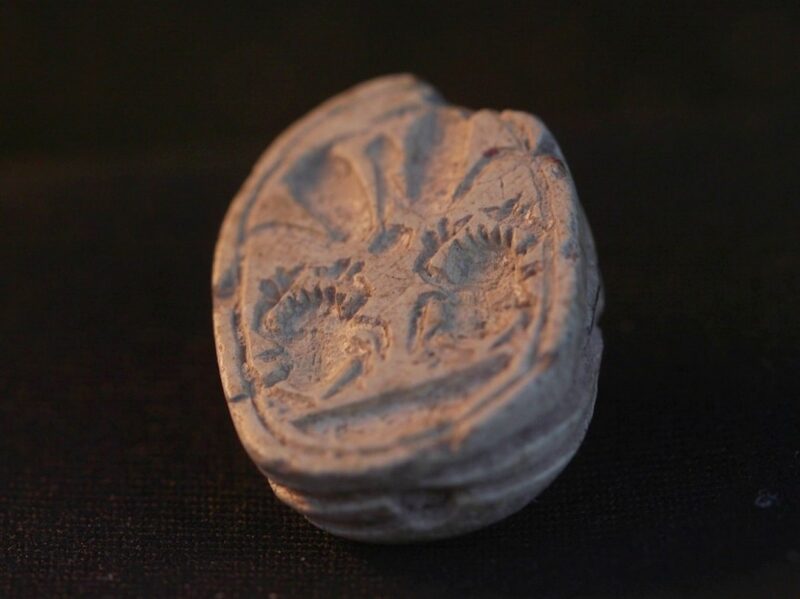
Photo: Israel Antiquities Authority
Tel Azekah was an important city in the Judean Lowlands during the Middle and Late Bronze Ages. Archaeologists have discovered many Egyptian and Canaanite objects in the area.
“The scarab found by Ziv joins a long list of Egyptian and Canaanite finds discovered here, which attest to the close ties and cultural influences between Canaan and Egypt during that period,” commented Oded Lipschits, director of the Tel Aviv University excavations at the site.
How did it wind up on a hiking trail?
Lipschits also explained how the ancient artifact ended up on a hiking trail. In 1898, when excavations first took place at that site, British archaeologists found an acropolis, a citadel, and an array of artifacts. After their dig, the man who owned the land asked them to fill the area they had excavated so he could farm there.
“So the modern layers are now inside, and the old layers that used to be very deep in the ground are now on the surface, Lipschits told The New York Times. “This is why people can find all kinds of ancient items like these scarabs on the surface.”
Experts will now study the amulet further. Nitzan and her family received a certificate of appreciation from the Israel Antiquities Authority for their “good citizenship.”
